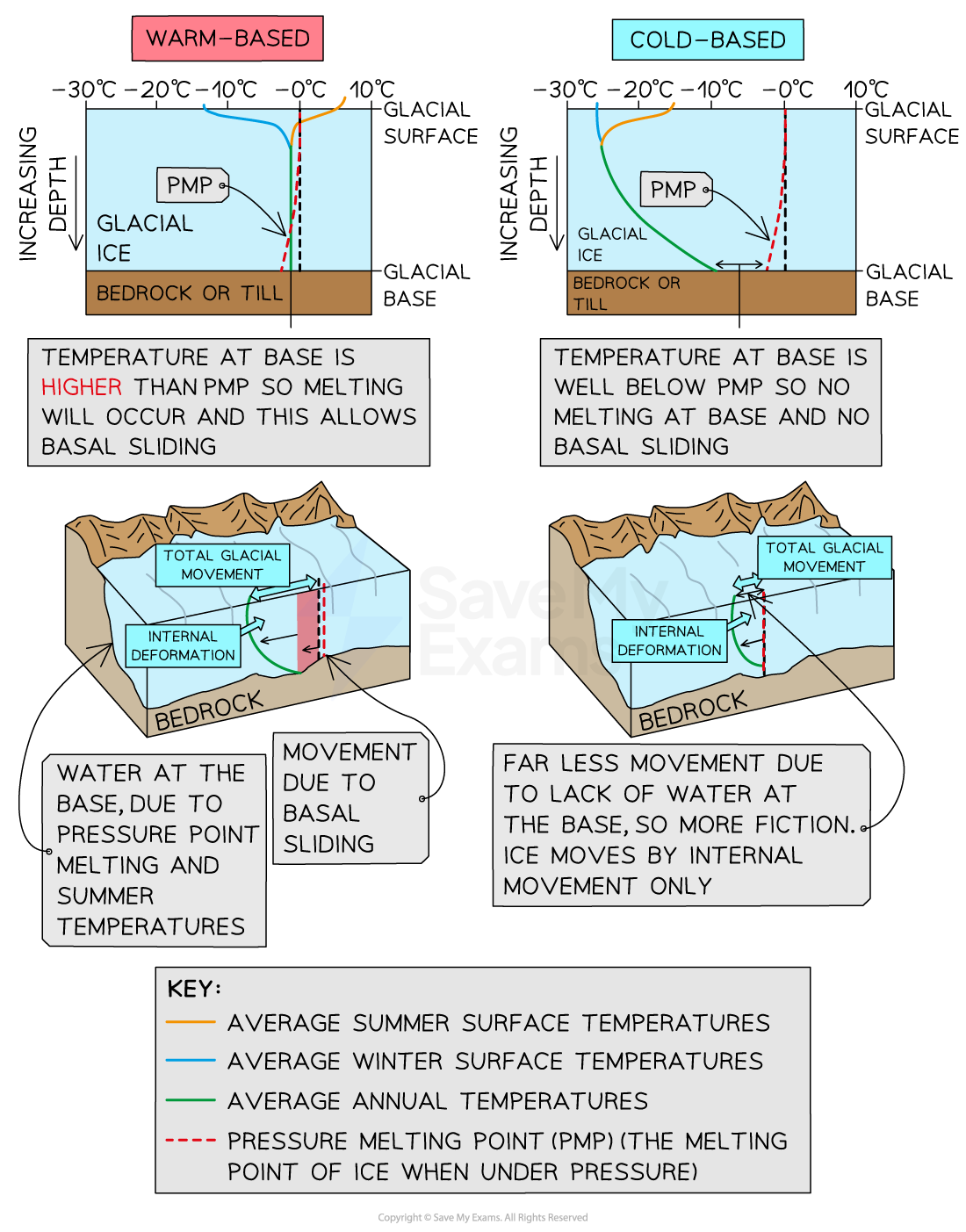Polar & Temperate Glaciers
- All ice moves under the influence of gravity downslope from high mountains to low outwash plains
- Weight, mass, and slope angle increase the shear stress point
- The momentum of movement builds towards the zone of ablation, which maintains dynamic equilibrium with the slope angle
- Movement towards the margins and snout of glacial ice continues, regardless of overall glacial retreat or advance
- Temperature and pressure melting point differentiates polar and temperate glacial movement
Pressure melting point (PMP)
- The temperature at which ice melts at a given pressure is the pressure melting point (PMP)
- The melting point of water depends on air pressure above the ice
- As air pressure increases, the temperature at which ice melts lowers
- At 1 atmosphere pressure, the melting point of ice is 0°C
- At 200 atmospheres, the melting point decreases to -1.85°C
Warm-based glaciers
- Occur in temperate regions such as southern Iceland and western Norway
- They are relatively small and range in width from hundreds of meters to a few kilometres
- Melting occurs during the summer months
- It is this meltwater that 'lubricates' the base and sides of the glacier, which assists movement (called basal sliding) and increases rates of erosion, transportation, and deposition
- As such, all ice in these glaciers is at, or close to, the melting point of ice
- Temperatures at the base are, therefore, at or just above the pressure melting point
Cold-based glaciers
- Occur in polar regions such as central Greenland and Antarctica
- They are large, vast sheets and caps of ice covering hundreds of km²
- Temperatures remain below melting point, with low rates of precipitation, resulting in low levels of accumulation
- Basal temperatures remain below the PMP, therefore, basal sliding does not happen
- This results in little erosion, transportation, and deposition
- Any movement is by internal deformation
- The ice stays frozen to the bedrock and moves slowly at 1-2cm a day
- Orientation of the ice crystals in the glacier, to the direction of movement, allows the crystals to slide over each other

Warm and cold based glacial profile - meltwater is the important factor in movement
Exam Tip
Ensure that you can write clear definitions of pressure melting point, warm and cold-based glaciers for the exam. Practice drawing diagrams to help support your answer. A well labelled or annotated diagram will gain you credit in the exam.



